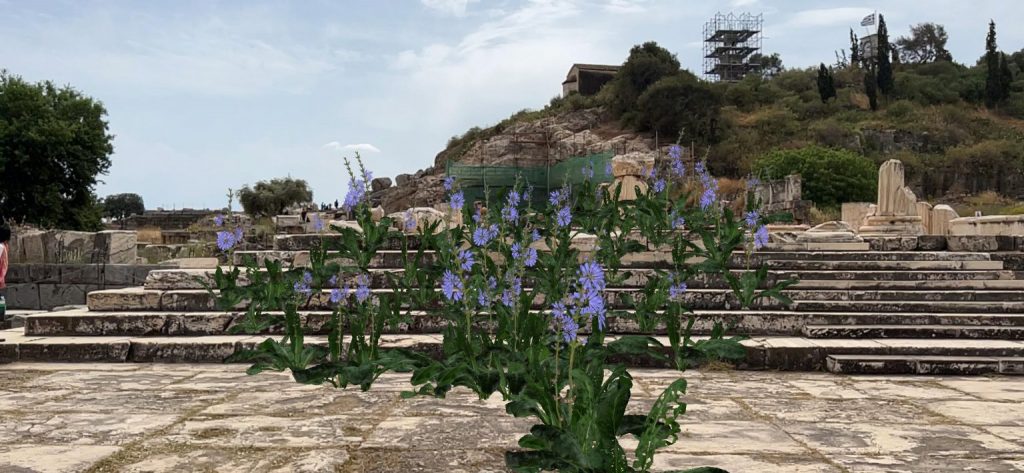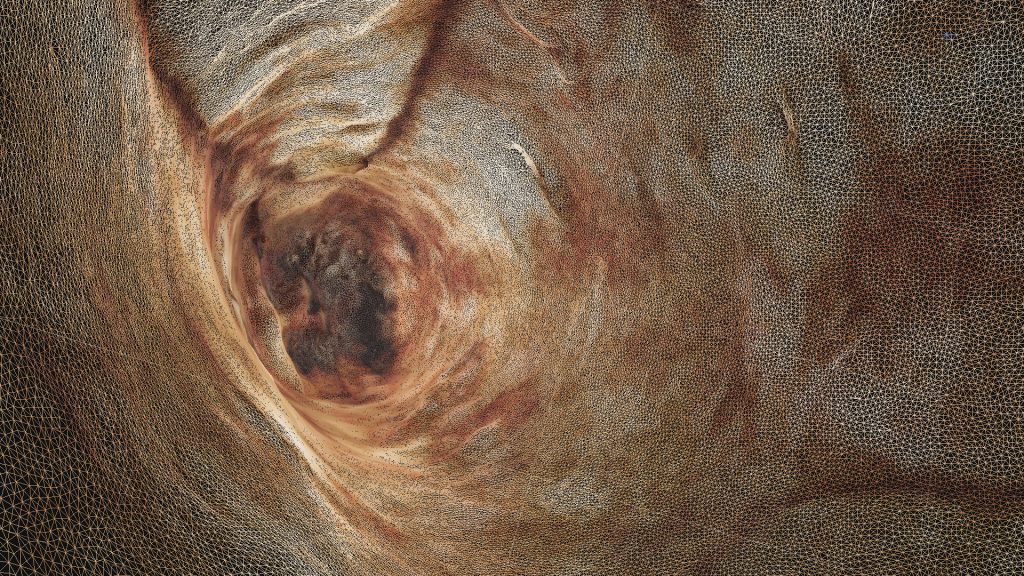The €7.3 million CHIC project supports the establishment of a responsible innovation pathway for the development and application of New Plant Breeding Techniques (NPBTs) for chicory as a multipurpose crop for the production of high-value consumer products, in line with societal needs and concerns. The consortium includes SMEs, an industrial partner, non-profit organizations and research institutes from 11 European countries and one from New Zealand.
Augmented Reality App
Blue Flower is an augmented reality (AR) app for iPhone and Android devices allowing you to plant chicory anywhere in the world.

“Blue Flower” a standalone Augmented Reality (AR) app is now available for iPhone/iPad/Android devices http://onelink.to/blueflower.
The gene edited plants represented here are not normally allowed to leave the laboratory in many countries but through augmented reality users can transgress the rules, fill the world with them, and take and share photos. The app can also accompany the sculptural installation in exhibitions, such as at Kunsthaus Wiesbaden.
The work is also part of the Art & Science Node app which is available on Google Play and the Apple App store alongside other works. This app was also part of the 2021 Brighton Digital Festival.
Blue Flower on the Apple App Store
Blue Flower on the Google Play Store
News
- Capture the Future(s): OUR BIO-TECH PLANET – June 27, 2021For the Plant Biology Europe Congress 2021, Art Science Node (ASN) prepared a fully virtual exhibition “Capture the Future(s): OUR BIO-TECH PLANET. The Routes to Roots Networks and Beyond”.
- Biotechnology From the Blue Flower: The Unnatural, That Too is Natural – June 16, 2021Artists Anna Dumitriu and Alex May will discuss their project “Biotechnology from the Blue Flower” with a panel of experts from the EU Horizon H2020 CHIC project, with whom they are collaborating.
- Chicory Root 3D Scanning – November 2, 2019We got our hands on some fantastic chicorium intybus specimens all the way from the Netherlands.
Biotechnology from the Blue Flower project:
Artists Alex May and Anna Dumitriu are creating a new sculptural bio-digital installation which can exist across both real and virtual spaces. It will be based on an exploration of chicory plant research. The artists will focus on the areas of the use of chicory for dietary fibre and its impact on human health and the human microbiome, and will explore the uses of inulin and medicinal terpenes extracted from chicory.
They will work with the plants themselves: the roots, chicory flour and chicory inulin and terpenes, as well as other potential materials we might discover. Both artists have extensive experience in working with biological media including medicines and genetically modified materials and therefore have a good understanding of health and safety, ethical and biocontainment issues.
These sculptural, physical materials will be fused with video footage from the laboratory and data visualisations derived from the research processed through 3D scanning and modelling techniques to create a dramatic interactive artwork that we envisage will be brought to life using digital technologies such as video-mapping and sensor technology to create an exciting and affecting gallery or museum installation.
Their 3D scanning and modelling techniques may also be used to generate either augmented reality (AR) experiences or virtual reality (VR) 3D video content accessible via low-cost cardboard VR headsets and Smartphones with uploaded to YouTube.
Their aim is to reach out to large audiences and provide a wide and exciting range of potential ways they can interact with their work across arts, science and online settings, for example an AR experience that can be triggered by a paper models that can be printed and made at home.
The artists are keen to explore the morphology of the chicory plants in the work as well as the history and cultural impacts of the plants throughout history, for example as an ancient remedy or a coffee additive in times of crisis, and then draw a thread between those histories and cutting edge contemporary research in the field and the potential future benefits of working with techniques such as CRISPR to provide healthcare and food benefits. They have substantial previous experience in this area having both developed artworks individually in this area.
The final artwork would also be accompanied by a participatory drop-in workshop activity using materials and techniques to create a forum for dialogue and discussion, as well as an events programme
